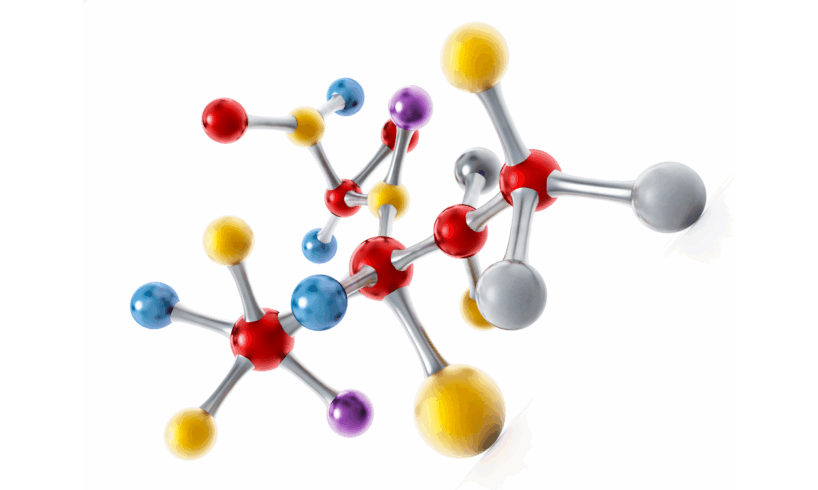
The peptide LL-37, belonging to the cathelicidin family, has attracted substantial interest in research due to its multifunctional roles believed to extend beyond direct antimicrobial action. This article explores the molecular properties of LL-37, surveys its putative roles in immunomodulation, nucleic acid interactions, anti-biofilm and anti-amyloid activities, and examines how it might serve as a scaffold or tool in diverse research domains such as biomaterials, diagnostics, synthetic biology, and as a modulator of cellular signaling.
Introduction and Molecular Properties
LL-37 is a 37-amino acid cationic peptide derived from the C-terminal domain of the precursor protein hCAP18 (cathelicidin). The precursor is cleaved by proteases such as proteinase 3 (in neutrophil contexts) or other proteases in epithelial sites, releasing the mature peptide. The mature LL-37 holds a net positive charge (commonly +6) and displays amphipathic character, which supports interactions with negatively charged surfaces or molecules such as microbial membranes or nucleic acids.
In aqueous solution, LL-37 tends to adopt an α-helical conformation over residues ~2–31, while its C-terminal tail may remain relatively more disordered. Its amphipathic helix is believed to enable insertion or close approach to lipid bilayers, and its cationic nature appears to enable initial electrostatic attraction to negatively charged membranes or polyanions. The peptide is also believed to be capable of oligomerization or aggregation under certain conditions, with structural plasticity that may supporte its binding and functional modes.
Because of these properties, LL-37 is often studied in simplified systems (lipid vesicles, supported lipid bilayers, polyanion complexes) to characterize how it might interact with membranes, how it may perturb bilayer integrity, and how variants or fragments of LL-37 alter behavior. Research suggests that LL-37 may induce pore formation, cause membrane thinning or curvature stress, or generate local defects that compromise membrane integrity.
Direct Antimicrobial and Anti-Biofilm Activities in Research Models
In research models, LL-37 has been suggested to exhibit broad antimicrobial properties against Gram-negative and Gram-positive bacteria, through membrane perturbation and sometimes intracellular targeting after translocation. Studies suggest that the peptide may insert into bacterial membranes, destabilize lipid packing, and form transient or semi-stable pores, leading to leakage of cytoplasmic content and cell death observed in mammalian models. Some investigations indicate that LL-37 is more potent against Gram-negative strains, likely due to the lipid composition differences and outer membrane access.
Beyond planktonic bacteria, LL-37 is of interest in anti-biofilm research. Research indicates that the peptide may mitigate biofilm formation at early stages by interfering with bacterial adhesion or quorum sensing, and may permeate biofilm matrices to kill embedded cells. Because biofilms often resist conventional antibiotics, LL-37 (or derivatives thereof) might be relevant in biofilm disruption assays or as coatings on surfaces (e.g., material surfaces in microfluidic devices, sensors, or implant mimics). Immobilization of LL-37 on surfaces or within polymer matrices is a promising approach in research to localize its activity and reduce diffusion losses.
Truncations and derivatives of LL-37 (e.g., KR-12, LL-17 fragments) are also explored to dissect minimal antimicrobial motifs and optimize potency or specificity. Some derivative peptides outperform the parent molecule in particular settings (especially under ionic or physiological buffer conditions) in research models.
Immunomodulation, Chemotaxis, and Signaling Research
One striking aspect of LL-37 is its potential to modulate immune responses, beyond its direct microbicidal roles. In research models, the peptide appears to supporte chemotaxis, cytokine gene expression, cell differentiation, and receptor signaling.
LL-37 is thought to interact with host pattern recognition receptor ligands (for instance, lipopolysaccharide [LPS] or lipoteichoic acid [LTA]), binding and neutralizing such ligands, thereby modulating downstream signaling such as toll-like receptor (TLR) activation. It is suggested that via such interactions, LL-37 might suppress production of pro-inflammatory cytokines (e.g., TNF-α, IL-6, IL-8) induced by LPS or LTA in experimental systems. In parallel, investigations purport that LL-37 may upregulate other signaling pathways, acting in a pro-inflammatory or anti-inflammatory manner depending on context, concentration, and cellular environment.
Furthermore, LL-37 is speculated to be implicated in chemotactic modulation: it might recruit or modulate migration of immune cells (e.g., monocytes, neutrophils, T cells) through interactions with receptors such as formyl peptide receptor–like 1 (FPRL1) or others, thus guiding immune cell trafficking in model systems. Findings imply that the peptide may also supporte cell proliferation, differentiation, and wound repair circuitry by engaging receptors such as epidermal growth factor receptor (EGFR) or purinergic receptors, or indirectly modulating growth factor pathways. In research exploring inflammation or regenerative signaling, LL-37 may serve as a tool to perturb or tune immune signaling cascades.
In research on autoimmune or chronic inflammatory conditions, LL-37 is being considered for its dual roles: the peptide seems to contribute to pathogenesis (e.g., through stabilization of nucleic acid complexes, promoting type I interferon induction) or may act to dampen inflammatory loops, depending on concentration and cellular milieu.
LL-37–Nucleic Acid Complexation and Immune Activation
A particularly fascinating domain of LL-37 research lies in its potential to complex with nucleic acids (DNA, RNA, mitochondrial DNA, or extracellular DNA) and thereby modulate nucleic acid-sensing pathways. In research settings, LL-37 appears to bind polyanionic nucleic acids via electrostatic interactions, condensing them and possibly altering their presentation to cell surface or intracellular sensors.
When LL-37–DNA or LL-37–RNA complexes form, these may engage toll-like receptors (e.g., TLR3, TLR7, TLR8, TLR9) and amplify innate immune signaling, particularly type I interferon responses. In certain contexts, this may be leveraged in research projects focused on adjuvants, where LL-37 may help deliver nucleic acid moieties to immune cells, stabilize nucleic acids against degradation, and potentiate immunostimulatory signaling.
However, this same mechanism is theorized to be involved in triggering or amplifying autoimmune responses in disorders such as psoriasis or systemic lupus erythematosus, when self-DNA/LL-37 complexes stimulate aberrant TLR activation.
From a materials or nanotechnology perspective, LL-37 is speculated to serve as a condensing agent or scaffold for nucleic acid delivery: its cationic and condensing properties are analogous to those of other polycation carriers used in gene delivery. In synthetic biology, hybrid constructs of LL-37 linked to nucleic acid cargoes might be engineered to target immune cells or modulate immunogenicity. Understanding how LL-37 condensation geometry, stoichiometry, and structural conformation supporte receptor engagement is an open frontier in this domain.
Anti-Amyloid, Anti-Aggregation, and Anti-Protein Aggregates Potential
Emerging research proposes that LL-37 and its derivatives might interfere with pathological protein aggregation processes. In particular, LL-37 is implicated in anti-amyloidogenic activity: the peptide is theorized to bind amyloidogenic peptides or fibrils, disrupt their assembly, remodel fibrils, or mitigate the formation of toxic oligomers. This property is being explored in research contexts related to neurodegenerative disease models or in the study of protein misfolding and aggregation kinetics.
Conclusion
The peptide LL-37 is more than a prototypical antimicrobial peptide: it is a versatile scaffold, molecular modulator, and signaling probe with wide relevance in research domains. From anti-biofilm and antimicrobial assays to immunomodulatory modeling, nucleic acid complexation, anti-aggregation studies, cancer microenvironment probing, biomaterial coatings, synthetic biology constructs, and diagnostics, LL-37 offers a rich toolkit. Click here to learn more about the potential of this compound.
References
[i] Bhattacharjya, S., Li, J., & Lohner, K. (2024). LL-37: Structures, Antimicrobial Activity, and Influence on Amyloid. Biomolecules, 14(3), 320. https://doi.org/10.3390/biomolecules14030320
[ii] Santos, J., van Oosten-Hawle, P., & Holm, A. (2022). LL-37 and CsgC exemplify the crosstalk between anti- and pro-aggregation pathways. Frontiers in Microbiology / Biochemistry, special issue on amyloids and antimicrobial peptides. https://www.ncbi.nlm.nih.gov/pmc/articles/PMC9827758/
[iii] De Lorenzi, E., Kiyota, T., & Morgan, D. (2017). Evidence that the human innate immune peptide LL-37 may act as a binding partner to Aβ42 and modulate Alzheimer’s disease pathology. Journal of Alzheimer’s Disease, 58(3), 1005–1015. https://doi.org/10.3233/JAD-170223
[iv] Zhang, X., Liu, M., & Li, J. (2023). Complexation of the human cathelicidin LL-37 with nucleic acids: structure, immunostimulation, and disease implications. Biophysical Journal, 122(12), 2456–2468. https://doi.org/10.1016/j.bpj.2023.07.007
[v] Armiento, V., Loffredo, M. R., Sica, F., Fulgione, A., Capuozzo, A., & De Marzo, G. (2020). The human host-defense peptide cathelicidin LL-37 is a multifunctional modulator of immunity, metabolism, and disease. Angewandte Chemie International Edition, 59(14), 7350–7359. https://doi.org/10.1002/anie.202000148
The post LL-37 Peptide: A Multifaceted Molecule with Research Potential Across Diverse Domains appeared first on Rubryka.





